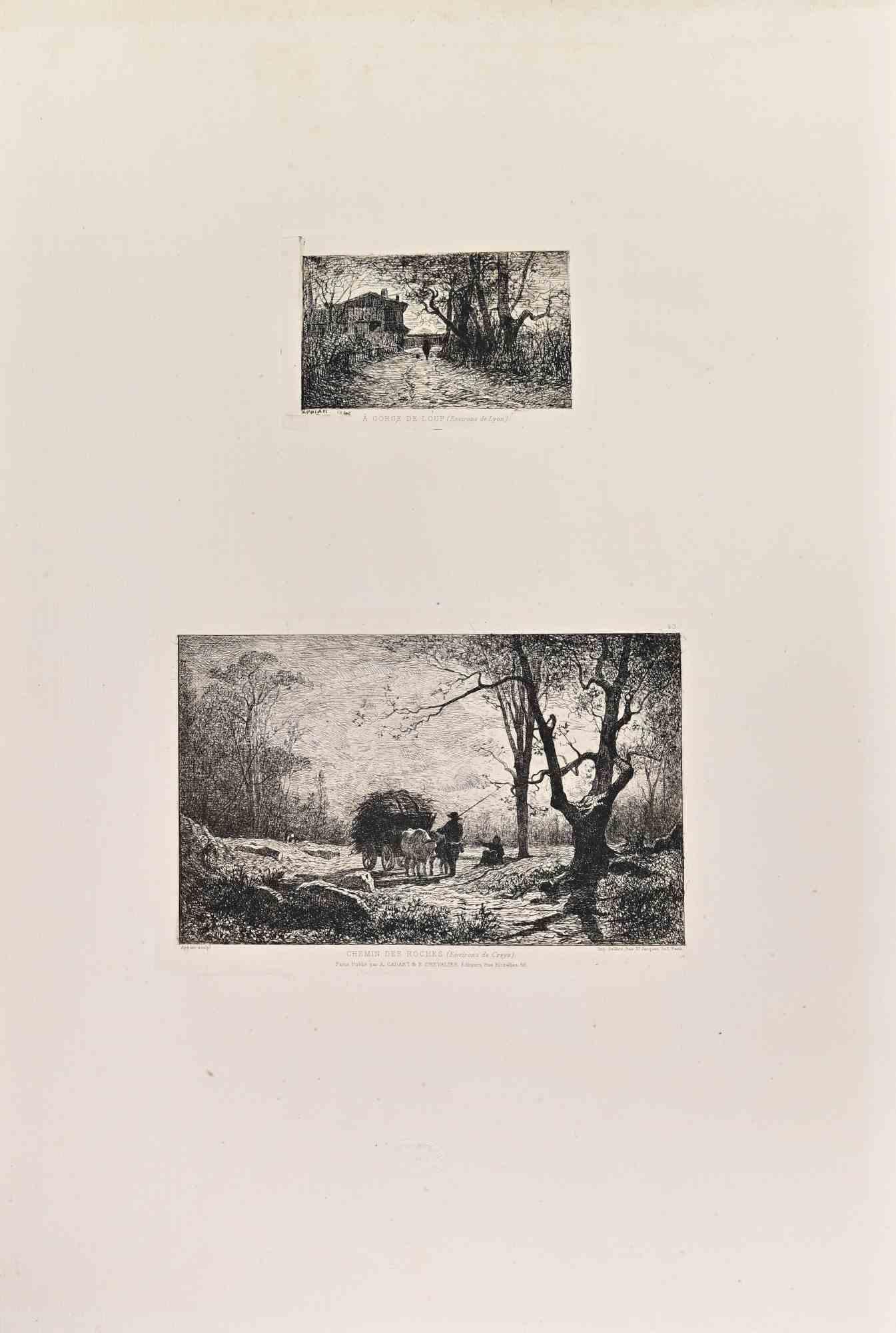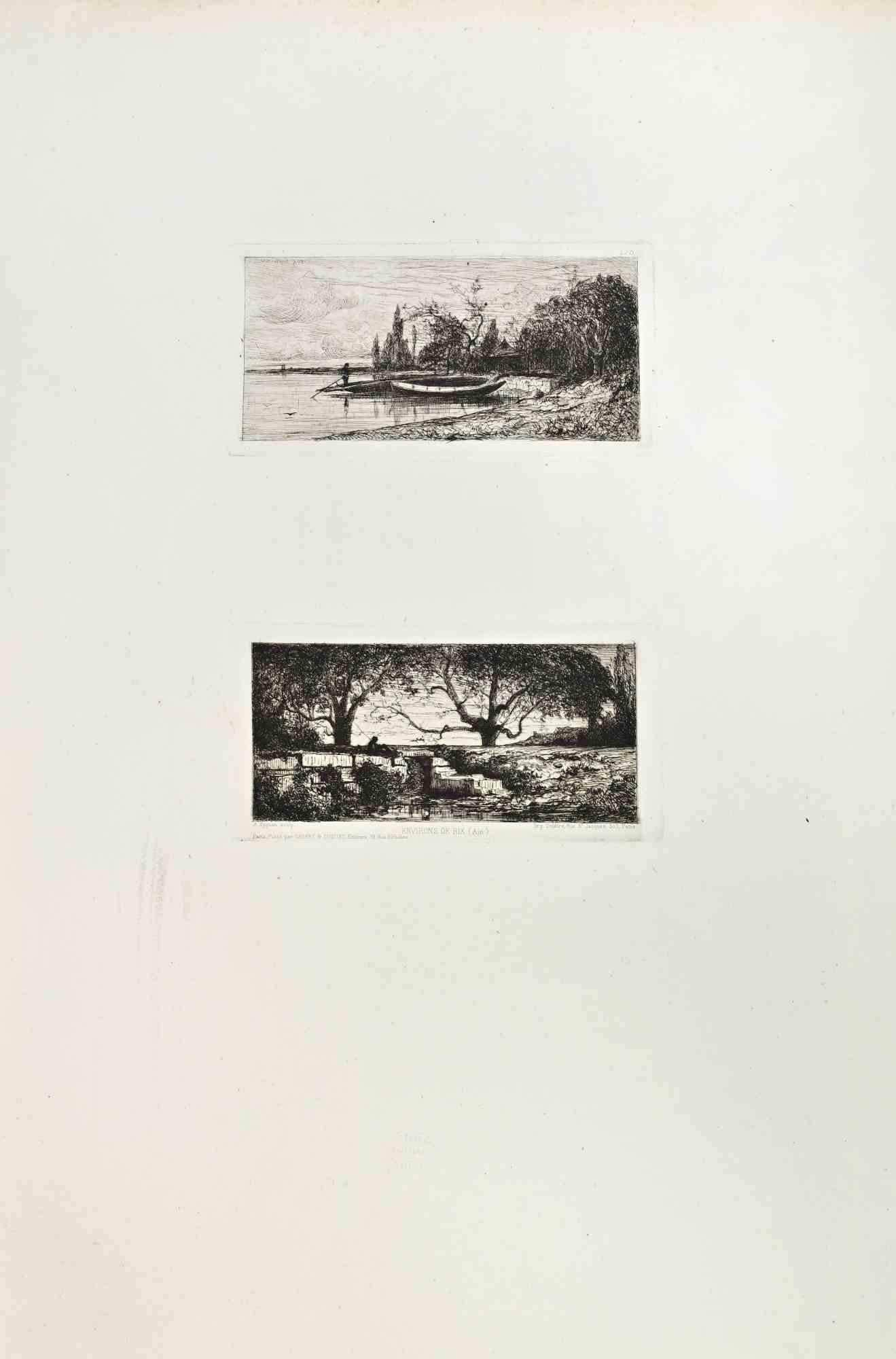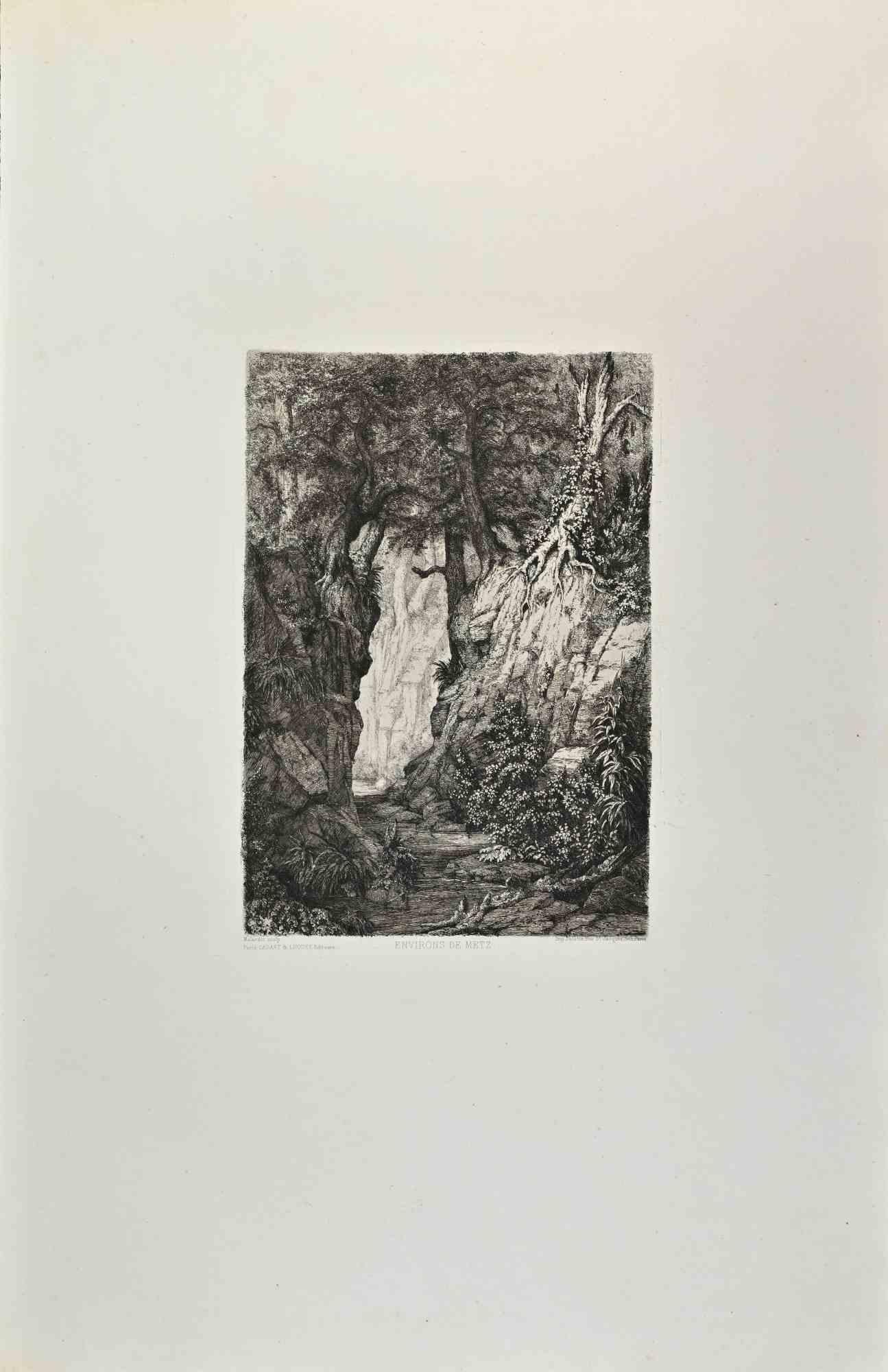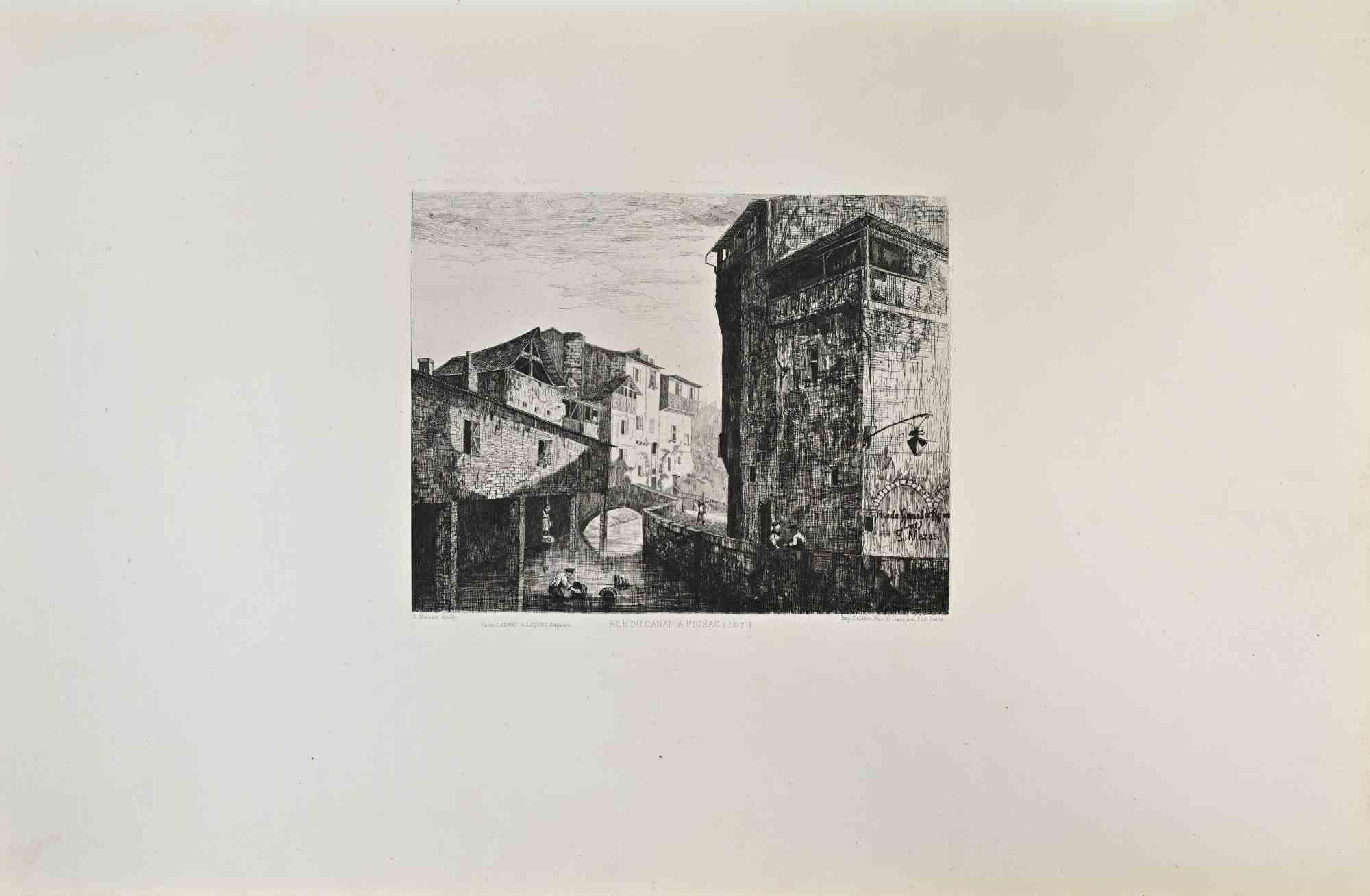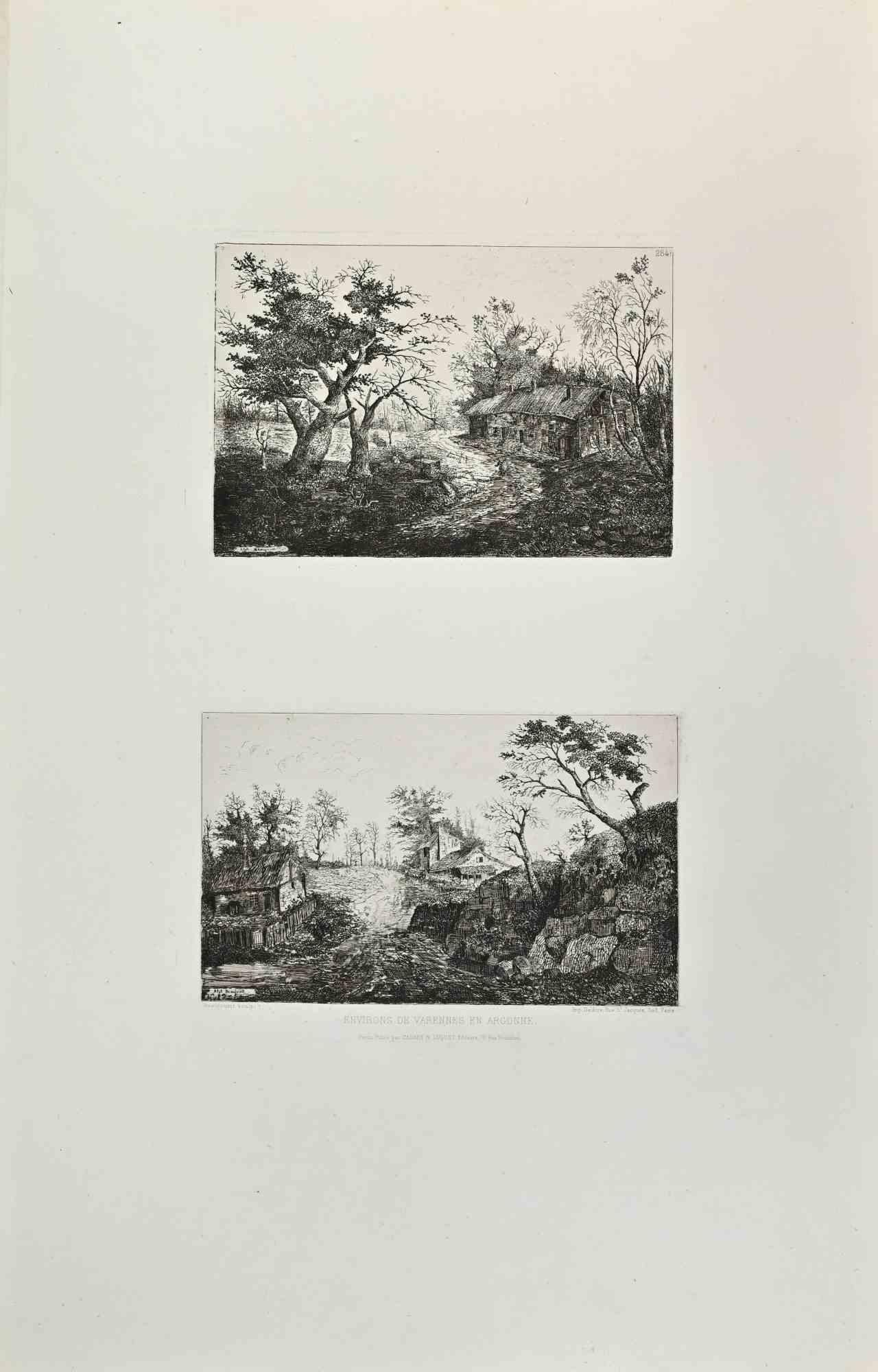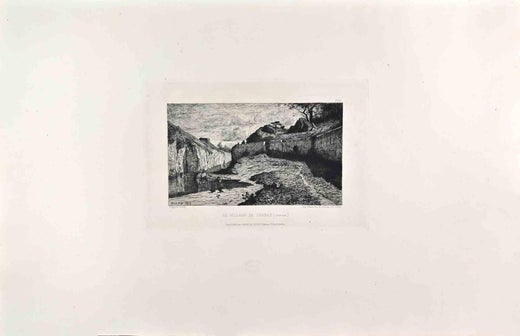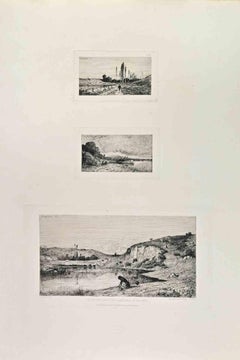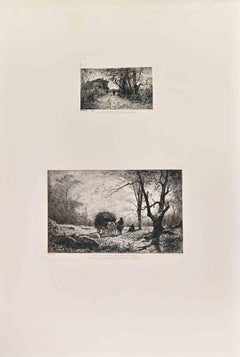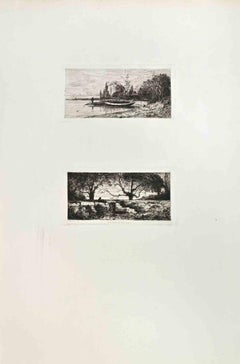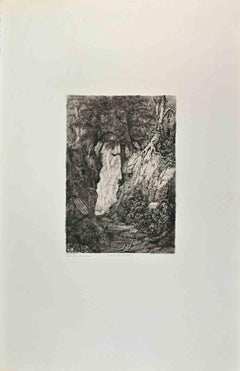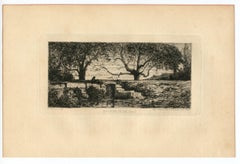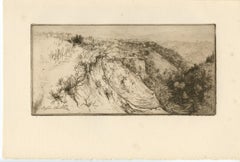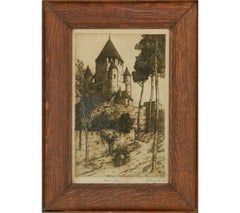Items Similar to Le Village de Chanaz - Etching by Appian - 1860s
Want more images or videos?
Request additional images or videos from the seller
1 of 5
Adolphe APPIANLe Village de Chanaz - Etching by Appian - 1860s1860s
1860s
$352.50
£269.93
€300
CA$495.44
A$543.47
CHF 284.35
MX$6,468.38
NOK 3,591.54
SEK 3,368.93
DKK 2,285.38
About the Item
Le Village de Chanaz is a black and White etching realized by A. Appian in the 1860s.
Titled in the lower.
Image size: 16x23.
Very good impression with wide margins and a very fresh inking.
Realized for the "Société des Aquafortistes. Born on the initiative of the publisher Alfred Cadart, the Société des Aquafortistes had the aim of reviving etching which had slowly been replaced by the cheaper lithography. Among the first participants in the association were the Barbizon painters who helped raise the medium to new heights, but over 100 leading French artists contributed to the creation of the 300 engravings. With the publication of the last volume in 1867 the society, given the high costs and modest commercial success, was dissolved but new experiments were soon born: Félicien Rops, former member, founded the Société Internationale des Aquafortistes in Brussels in December 1869 , while in London The Portfolio and the Society of Painter-Etchers were born respectively in 1870 and 1880. In Paris, in 1873, the magazine Paris à l'eau-forte was founded.
- Creator:Adolphe APPIAN (Lyon, 1818 - 1898, French)
- Creation Year:1860s
- Dimensions:Height: 14.18 in (36 cm)Width: 21.66 in (55 cm)Depth: 0.04 in (1 mm)
- Medium:
- Movement & Style:
- Period:
- Framing:Framing Options Available
- Condition:Insurance may be requested by customers as additional service, contact us for more information.
- Gallery Location:Roma, IT
- Reference Number:Seller: T-1501401stDibs: LU650314871752
Adolphe APPIAN
Adolphe Appian (born as Jacques Barthelemy Adolphe Appian on 28 August 1819 in Lyon, France, died on 29 April 1898 in Lyon) was a French landscape painter and etcher. He changed his name to Adolphe Appian at age fifteen. At the same age Appian attended the Ecole des Beaux-Arts at Lyon which was an art school which specialized in training to decorate fabrics by a local silk industry. He studied under Jean-Michel Grobon and Augustin Alexandre Thierrat. Later he opened a studio in Lyon and worked as a graphic designer. He travelled to Paris to finish his studies and after he had exhibited a painting and a charcoal drawing in the Paris Salon In 1852, Adolphe Appian met Camille Corot and Charles-François Daubigny who left a lasting mark on his work and his career. He participated in the Universal Exhibition of 1862 in London. In 1866, Appian's two works that he exhibited in Paris were bought by Napoleon III and by princess Mathilde.
He painted at the beginning of his career atmospheric pictures in a monochromatic palette of the riverside of the Rhone and the south of France. In 1870 he changed his style to use brilliant and striking color in his paintings but he still continued to make charcoal drawings as well as small etchings of landscapes in the Barbizon style.
From 1863, he began to produce etchings, printed by Auguste Delâtre.
As an etcher, he had a distinct influence on the American artist, Stephen Parrish.
In 1885, he participated in the first international exhibition of white and black , section "Charcoals" and obtained the medal of honor in gold.
He won the gold medal at the 1868 Salon in Paris, and participated in the 1889 Paris Universal Exhibition .
Appian frequented the village of Rossillon , then appreciated by painters, and spent many summers in Artemare , in the Bas-Bugey , where he went down to the Hotel Buffet. He painted many sites in the Valromey . A friend of the painters of the Barbizon school, he made several stays in Fontainebleau . He is nicknamed the " Charcoal Delacroix ".
Appointed Knight of the Legion of Honor inJuly 18926 , Adolphe Appian died in Lyon in 1898. His works a re kept in many public collections : In France
National Library of France
Municipal Museum of Bourg-en-Bresse
Castres Museum
Marseille , Cantini Museum
Museum of Fine Arts of Lyon
Nice Museum of Fine Arts
Cherbourg-Octeville , Thomas-Henry Museum
Mâcon , Musée des Ursulines
Chambery Museum of Fine Arts :
Tournus , Greuze Museum Paul-Dini Museum in Villefranche-sur-Saône Grenoble , Grenoble Museum
Rouen Museum of Fine Arts
Nantes Museum of Fine Arts
Le Puy-en-Velay , Crozatier Museum
Montpellier , Fabre Museum In the USA San Francisco , California Palace of the Legion of Honor
Cleveland Museum of Art Dalhousie University Art Gallery ( Halifax , Nova Scotia )
Pomona College Museum of Art
About the Seller
4.9
Platinum Seller
Premium sellers with a 4.7+ rating and 24-hour response times
1stDibs seller since 2017
7,816 sales on 1stDibs
Typical response time: 1 hour
- ShippingRetrieving quote...Shipping from: Monaco, Monaco
- Return Policy
More From This Seller
View AllUn Rocher dans les Communaux de Rix - Etching by Appian - 1860s
By Adolphe APPIAN
Located in Roma, IT
Un Rocher dans les Communaux de Rix is a black and White etching realized by A. Appian in the 1860s.
Titled in the lower.
Image size: 8 x 13, 8 x 12, 16 x 27
Very good impression...
Category
1860s Modern Figurative Prints
Materials
Etching
Chemin des Roches - Etching by Appian - 1860s
By Adolphe APPIAN
Located in Roma, IT
Chemin des Roches is a black and White etching realized by Appian in the 1860s.
Titled in the lower
Image Size: 34x23
Very good impression.
Realized for the "Société des Aquafor...
Category
1860s Modern Figurative Prints
Materials
Etching
Environs de Rix - Etching by Appian - 1870s
By Adolphe APPIAN
Located in Roma, IT
Environs de Rix is an artwork realized by A.Appian in the 1870s.
Etching.
Image size:9x17 and 9x17
Good conditions.
Realized for the "Société des Aquafortistes. Born on the ini...
Category
1870s Modern Figurative Prints
Materials
Etching
Environs de Metz - Etching by Charles-André Malardot - 1870s
Located in Roma, IT
Environs de Metz is an artwork realized by Charles-André Malardot in the 1870s.
Etching.
Good conditions.
Realized for the "Société des Aquafortistes. Born on the initiative of ...
Category
1870s Modern Figurative Prints
Materials
Etching
Rue Du Canal à Figeac - Etching by Étienne Mazas - 1870s
Located in Roma, IT
Rue Du Canal à Figeac is an artwork realized by E.Mazas in the 1870s.
Etching.
Good conditions.
Realized for the "Société des Aquafortistes. Born on the initiative of the publis...
Category
1870s Modern Figurative Prints
Materials
Etching
Environs De Varennes En Argonne - Etching by Alphonse Beaujouint - 1870s
Located in Roma, IT
Environs De Varennes En Argonne is an artwork realized by Alphonse Beaujouint in the 1870s.
Etching.
Good conditions.
Realized for the "Société des Aquafortistes. Born on the ini...
Category
1870s Modern Figurative Prints
Materials
Etching
You May Also Like
"Environs de Rix" original etching
By Adolphe APPIAN
Located in Henderson, NV
Medium: original etching. This impression on laid paper printed in 1868 for Philip Gilbert Hamerton's very scarce "Etching and Etchers". Plate size: 3 1/2 x 6 7/8 inches (88 x 175 mm...
Category
1860s Prints and Multiples
Materials
Etching
"La vallee fertile, pres Monte Oliveto Maggiore" original etching
By Edgar Chahine
Located in Henderson, NV
Medium: original etching. Catalogue reference: Tabanelli 199. This impression on laid paper was printed in 1906 and published by Gazette des Beaux Arts. Plate size: 4 x 8 1/2 inches ...
Category
Early 1900s Landscape Prints
Materials
Etching
"Ferme a Vauhalan" original etching
Located in Henderson, NV
Medium: original etching. Published in 1912 by Gazette des Beaux Arts. Plate size: 5 x 9 1/4 inches (128 x 232 mm) on cream laid paper. Signed in the plate, not by hand.
The Gazett...
Category
1910s Landscape Prints
Materials
Etching
Frederick Marriott (1860-1941) - 1909 Etching, Provence Commune
Located in Corsham, GB
A rustic and striking early 20th Century etching of a commune in Provence, France. Two women chat on the path outside, while holding baskets as tall trees tower over them. The artist...
Category
20th Century Landscape Prints
Materials
Etching
$351 Sale Price
20% Off
Small Village in France, near the Church - Lithograph, 1971
By Paul Cézanne
Located in Paris, IDF
Paul Cezanne
Small Village in France, near the Church, 1971
Lithograph and stencil (Jacomet workshop)
Unsigned
Numbered / 225
On paper applied on Arches vellum 53.5 x 41.5 cm (c. 21...
Category
1970s Modern Landscape Prints
Materials
Lithograph, Stencil
Late 19th Century Normandy French Market Engraving
By Charles John Watson
Located in Soquel, CA
Charming engraving of the market in Aumale, France in Normandy by Charles John Watson (British, 1846-1927), circa 1880. Signed within engraving and below by artist. Presented under g...
Category
1880s Impressionist Landscape Prints
Materials
Paper, India Ink
$1,480 Sale Price
20% Off
More Ways To Browse
Tsukioka Kogyo
Utagawa Hiroshige On Sale
Utagawa Yoshitora
Vanity Fair Spy Lithographs
Victor Spahn
Vintage Lithographed Chinese Cigarette Poster
Vintage Mermaid Poster
Vintage Winnie The Pooh Prints
Vivian Springford
Warhol Dollar Signs
Warhol Trial Proof
1970s Printed Mirror
Al Pounders
Alberto Giacometti On Sale
Allison Lefcort On Sale
American Psycho
Ayako Rokkaku
Bassano Plates

